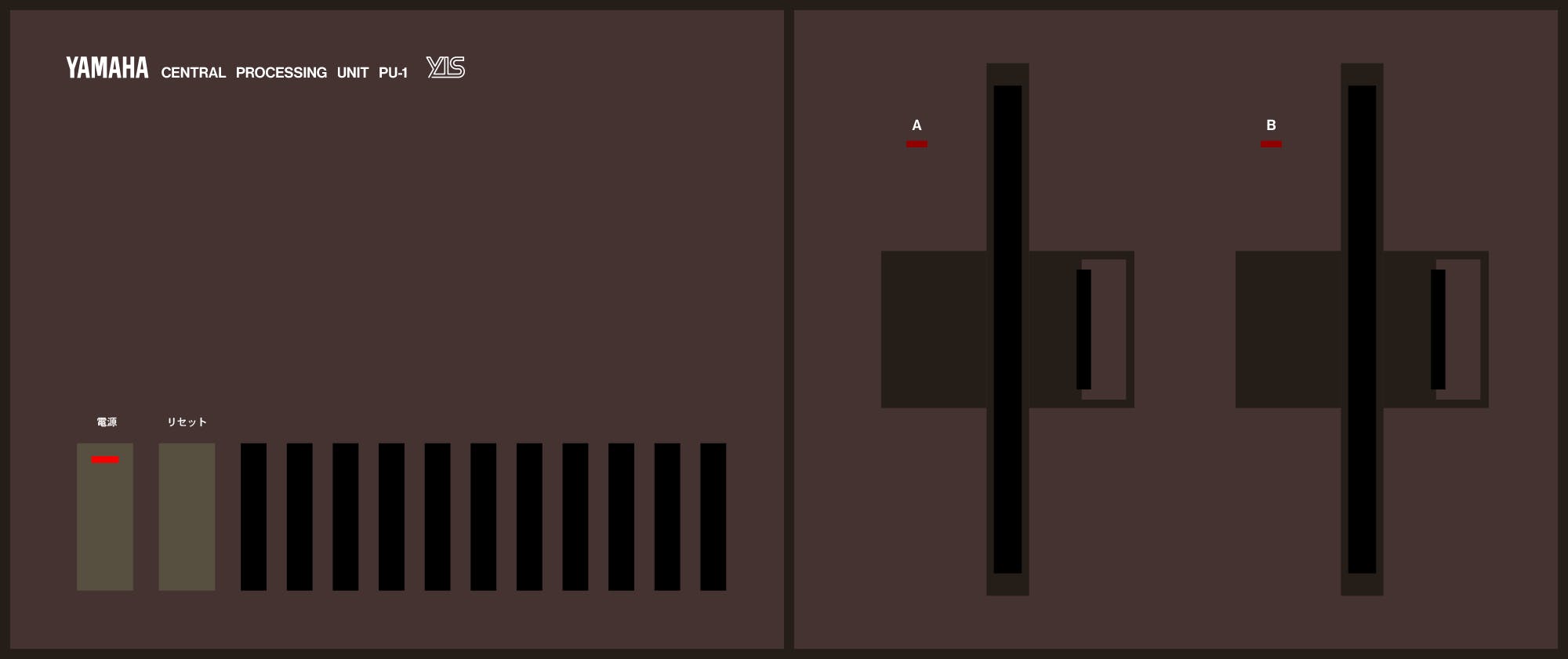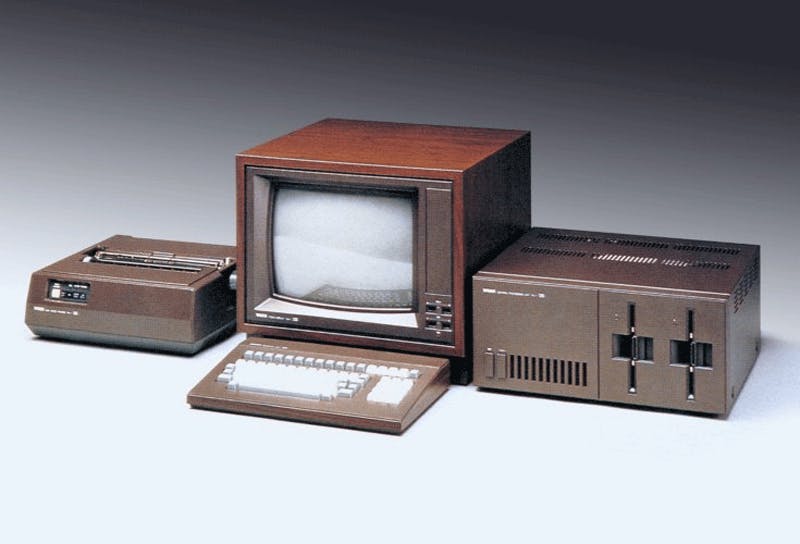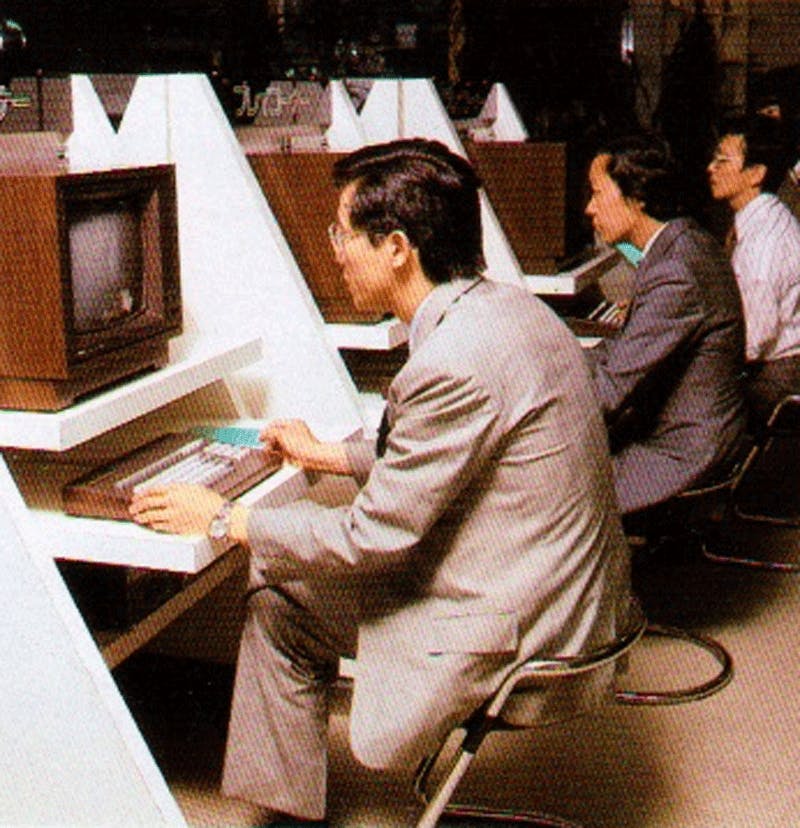1982 (Jan.)
Initially sold for ¥527,000
In 1982 Yamaha envisioned a computer-controlled system encompassing everything from piano and synthesizers to video games, karaoke, home videos and home automation. YIS, standing for Yamaha Integrated System, was an idea 30 years ahead of its time that was promoted with no expense spared. It came out of nowhere through advertisements on computer magazines and faded into obscurity as quickly around the beginning of 1983.
Given the similarity of the "dark chocolate" colour scheme one could speculate the DX7 was to be part of this ecosystem but finally dropped the RS-232C interface in favor of MIDI, thought there's no way to confirm such hypothesis.
The heart of the system is the PU-1, with the basic model being the PU-1-10. A PU-1-20 model was also available with integrated graphic capabilities, and a PU-10X was probably scheduled to be released in late 1982 but probably never reached the market.
The CPU is equipped with a custom chip developed by Yamaha called YM2002 which is said to be an extension of the 6502 architecture. It's unknown whether it was clocked at 1.8MHz or 2MHz. The CPU is mounted on an independent board, suggesting Yamaha planned to sell replacements or upgrades. 64KBs or RAM are provided along with a 4KB ROM containing most likely boot and BIOS information.
There are 7 expansion slots, three of them are pre-populated (CPU, floppy disk controller and a CAP board). The PU1-10 has no graphic capabilities other than character-based display functions provided by the CAP board and was only compatible with the GM1 display. Extra boards to interface with the Piano player unit (PU1-BP) and some kind of synthesizer (PU1-BM) were available.
System (YIS OS) is loaded via 5 1/4 inches floppy disks, but it's apparently just a Yamaha flavor of BASIC. A light pen was also included in the box, to be used with the compatible Yamaha display. The keyboard (KB1 or KB2), the monitor (GM1 or GM2) and every accessory were all sold separately, making it one of the most expensive option of home computing at the time.


